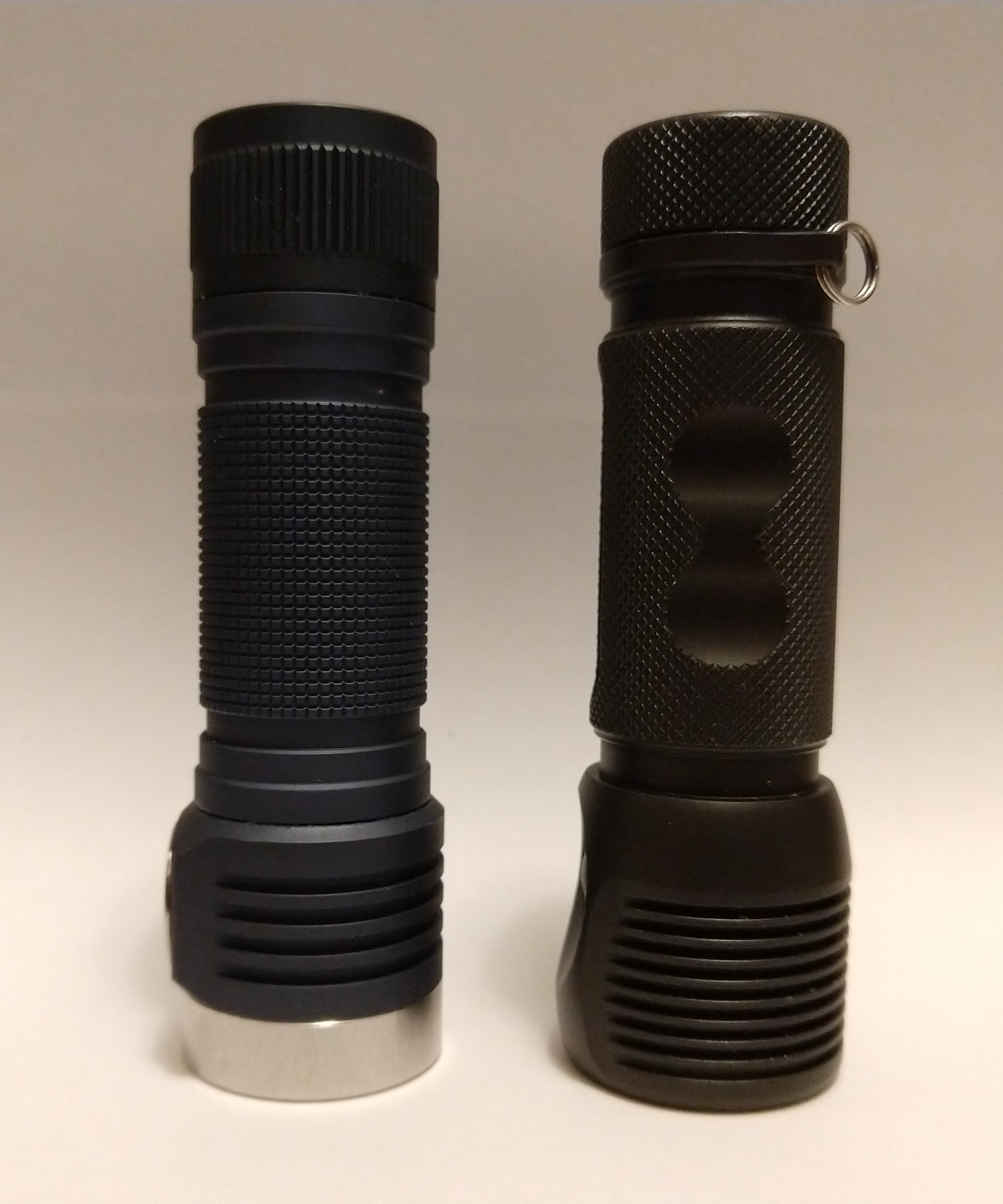Today I publish runtimes for my Emisar D4V2.
Version I bought:

I bought the light in November 2022 directly from intl-outdoor.com
Please note that my shoebox is only roughly calibrated, so don't take these numbers as the absolute truth. Unless you know where to find a Maukka flashlight ![]()
18350 tests were done with an Epoch 1100mAh 9A IMR battery.
18650 tests were done with a Sanyo NCR18650GA 3500mAh battery.
All tests are done under cooling condition. Let’s specify it, it’s not just a fan. I push compressed air directly on the flashlight. It’s winter time here and the tests are done in a heated shed. Ambient temperature is 12°C (~54°F).
My gold was to compare the Emisar D4V2 with my Zebralight SC600w Mk IV Plus 18650 XHP50.2 NW.




Besides the size, weight and heat management, output/runtimes should not be considered in competition because one is a 2700 K light and the other a 4500 K light. I was definitely expecting more efficacy with the Zebralight. I matched the D4V2 output with the SC600w outputs the more accurately I could. This was not easy and never 100% perfect.
Let’s start with the 18350 at Turbo:

Turbo is… turbo, so no direct match with any SC600w level. This light does not manage heat very well. My compressor is not industrial and is limited to 2.6 SCFM@90 PSI. I needed to push it to the maximum, but it was not enough to eliminate the heat factor completely. Started at 1723 lumens. Still 1723 lumens after 30 sec. Gradual step down to 1357 lumens after 6 min then a major step down to 531 lumens.
18350/adjusted to 1296 lumens:

Starting at 1296, the light quickly steps down to 1270 lumens after 20 sec. Then 1270 until the 5th min, then 1244 lumens until reaching the 9th min. Major step down to ~500 lumens.
18350/adjusted to 706 lumens:

Besides the little hiccup at the end, the output was stable at 706 lumens for 25 min.
18350/adjusted to 346 lumens:

346 lumens, flat for 64 min, then steps down.
18350/adjusted to 154 lumens:

154 lumens, flat for 157 min (2.5 h), then steps down.
Now using a 18650 at Turbo:

This looks a bit messy. During the first test (in blue), I temporarily pushed the air to the maximum with the pistol and realised I was not cooling the light enough so the output went up again reaching 1600 lumens for a few minutes. That’s when I new this light was not managing the heat the same way the SC600w is capable. I did and uncooled test after (see further down). The second test (brownish line) was done at ~2.6 SCFM which was still not enough, but that’s the maximum ![]() . Tested #2 started at 1703 lumens. Reached 1629 lumens after 30 sec. Gradual step down to 1372 lumens for nearly 19 min, then a major step down to ~525 lumens until the 38th min.
. Tested #2 started at 1703 lumens. Reached 1629 lumens after 30 sec. Gradual step down to 1372 lumens for nearly 19 min, then a major step down to ~525 lumens until the 38th min.
18650/adjusted to 1289 lumens:

Started at 1289 lumens for 1.4 min then 1263 until reaching 29th min. Major step down to ~500 lumens until reaching 43th min.
18650/adjusted to 701 lumens:

701 lumens, flat for ~78 min, then steps down.
18650/adjusted to 347 lumens:

347 lumens, flat for ~182 min (3 h), then steps down.
18650/adjusted to 157 lumens:

154-157 lumens, flat for ~490 min (>8 h), then steps down.
Let’s compare the heat management: Emisar D4V2 vs Zebralight SC600w @ Turbo (no cooling):

Because a 2700 K emitter is normally less efficient then a 4500 K one, the light may produce more heat for the same level. Still, the difference is astonishing. For the SC600w, I also noticed that the cooled test has less runtime compared to the one without cooling. A 30 min difference. My electric car is also more efficient when the battery is hot.
Let’s play with graphs:





Next runtimes tests with my SC64w HI 18650 XHP35 Neutral White.